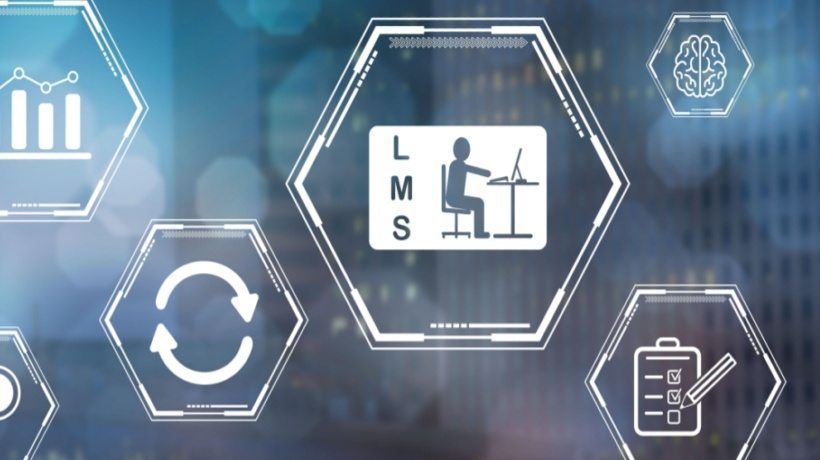Maximizing Efficiency And Engagement With 10 Advanced LMS Features
In today's fast-paced corporate and organizational settings, having an efficient and effective Learning Management System (LMS) is essential for enhancing employee training and development. As organizations transition to more digital and flexible learning platforms, understanding the most valuable features of an LMS becomes critical. This article discusses 10 key LMS features that are essential for organizations and how they can be optimized for better learning outcomes.
10 Must-Have LMS Features
1. Course Development And Content Administration
The ability to easily create and manage course content is one of the fundamental components of an efficient Learning Management System. Advanced LMS platforms come with built-in course-building features, in contrast to basic LMS or LXP systems that require external content-creation tools. If your organization is using a basic system, then go for LMS migration. This is because modern LMS platforms simplify your tech stack and eliminate the need for extra software by offering a streamlined process for creating personalized training courses from scratch. With corporate LMS solutions, this feature is especially helpful as it ensures that all training materials are centralized and easily accessible.
2. Customizable LMS
A custom LMS provides solutions that are specifically designed to address the distinct training requirements of your organization. By designing a bespoke Learning Management System, you can integrate specific features, branding through white-labeling, and workflows that align with your corporate goals. Custom LMS platforms provide flexibility, allowing you to create personalized learning paths, assessments, and content that enhance learner engagement and performance.
3. In-Built Reports And Dashboards
Robust reporting and analytics are necessary for effective training programs to monitor learners' performance and progress. Customizable dashboards with intricate charts and visualizations are offered by numerous LMS platforms. With the use of these tools, administrators can keep an eye on trainee participation, completion rates, and general performance. This allows for data-driven decision-making that enhances learning outcomes. However, ensuring compliance with organizational goals and upholding high standards in employee training is also part of LMS reporting and analytics.
4. SSO LMS
Allowing users to log in with a single set of credentials across numerous platforms simplifies access when Single Sign-On (SSO) is implemented in your Learning Management System. Through the reduction of the need for multiple passwords and the simplification of the login procedure, SSO integration with third-party systems and your website improves security and the user experience. By enhancing overall productivity and flow within the LMS, this seamless access ensures that learners may swiftly and easily interact with training content.
5. Local Integrations
The functionality of an LMS is improved by its capacity to integrate with other software programs. Integrations simplify the learning process, whether they are with department-specific platforms like Salesforce or communication technologies like Zoom, Microsoft Teams, and Slack. Extensive interconnections are provided by many LMS platforms, enabling smooth workflows and on-the-job training. These interfaces ensure that all learning data and procedures are integrated into a single system, which is especially beneficial for LMS conversion.
6. Blended Education
Blended learning is a flexible strategy that accommodates different learning preferences by combining online and in-person instruction. To improve the learning experience, certain LMSs incorporate role-play simulations, which offer real-world interactions in a controlled setting. By giving employees the freedom to select the learning style that best fits their needs, including location, time, and preferences, this strategy increases employee engagement and retention.
7. Content-Authoring Tool
A powerful content-authoring tool within an LMS allows for the creation of engaging and interactive training materials. These tools support multimedia content, including images, audio, video, and animations, and offer features such as drag-and-drop interactivity, co-authoring, and extensive libraries for quizzes and templates. With support for multiple content compliance standards like SCORM and xAPI and seamless import and export capabilities, these tools enable impactful and dynamic course creation that aligns with your branding and training objectives.
8. Social Learning
An LMS's ability to integrate social learning approaches can greatly improve training. Learners can engage with each other, exchange questions, and share information through features like message boards and forums. By facilitating peer-to-peer education, this collaborative approach not only increases learning but also lessens the workload for trainers.
9. Management Of Certification And Accreditation
Monitoring certifications and skill growth is essential for assessing training compliance and efficacy. Platforms provide comprehensive functionality for managing certifications, allowing learners' qualifications to be combined into an exportable format. Maintaining regulatory compliance and proving the training program's Return On Investment (ROI) depend heavily on this feature.
10. Gamification
Leaderboards, badges, and levels are examples of gamification aspects that can make training more interesting and inspiring. Research indicates that gamification can significantly boost productivity and profitability. Certain LMSs integrate interactive and competitive gamification components to improve student retention and engagement.
Conclusion
Choosing the right LMS involves considering various features that align with your organization's training goals and learner needs. From course creation and mobile learning to reporting, custom assessments, and gamification, the right LMS can streamline processes, enhance engagement, and improve learning outcomes. Whether you are looking for a corporate LMS, an association LMS, or a platform with extensive integrations and advanced security measures like SSO LMS and online exam proctoring software, it's essential to find a solution that offers comprehensive functionalities. Embracing these advanced LMS features will ensure that your organization stays ahead in delivering effective and impactful training programs.

